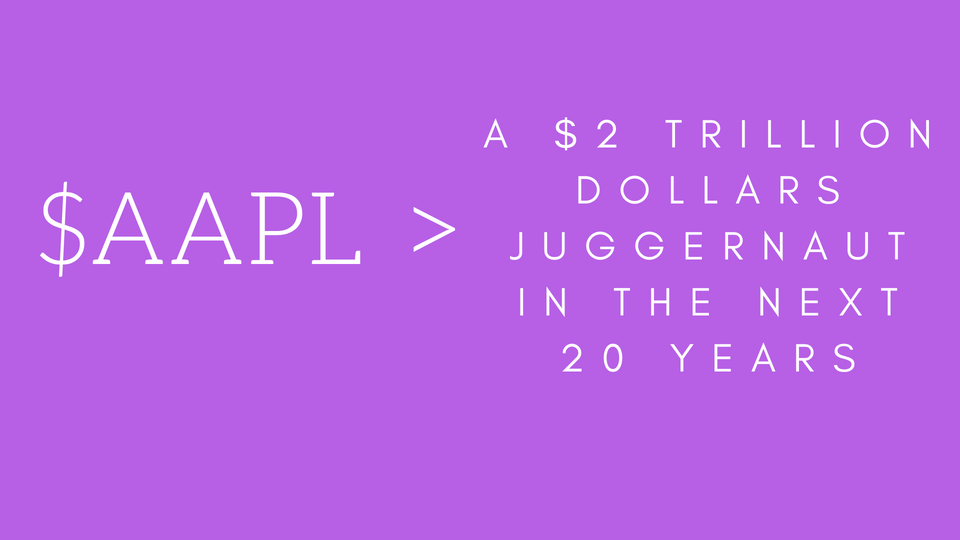The last week (January 15th to January 21th, 2017) was a reveling time for myself. Every morning, when I wake up, my girlfriend prepares me a good cup of hot chocolate and I dedicate the first 30 minutes of my time to read Brad Feld and Jason Mendelson´s “Venture Deals 3.0” book.

Brad and Jason made an outstanding work with this book, explaining in simple terms the ins and outs of the Venture Capital industry, and how any entrepreneur could take advantage of it.
This is not the review of the book like I promised to Brad, when he wrote about this new edition in his blog; this is just to talk about one of the side effects that the book has made in my mind.
So, Brad: Believe me, when I finish the book, I will write a detailed perspective of the book in this publication, including the little story how you sent me the book to Cuba without hesitation. Thanks again for this.
You should be wondering why I´m starting this post talking about Brad and Jason´s book, and how this is related to Apple.
Actually, it’s quite simple: One of the side effects of reading the book, it´s that it raises an inner interest I always have had inside my mind:
To become in a long-term successful investor, with the capacity, resources and knowledge to build a modern investment portfolio a la “Bill Graham”
Brad and Jason are Venture capitalists, but this is one of the many ways to invest money. I remember right now a post I wrote in 2013 about the creation of a VC firm focused in Green tech investments, mentioning to organizations like Nest (before Google´s acquisition), Tesla Motors, and many more.
That idea has been in my mind almost every day, and Venture Capital 3.0 have brought it to the daily discussion with my girlfriend, who has a degree in Laws but is a very curious person with a deep love for technology.
In one of our last debates, we were talking about other ways to invest money. Index funds, bonds, ETFs and Stock market were terms which were inside the discussion.
I explained to her other things like, what was an Initial Public Offering (IPO), Mean-Variance Optimization, Market Capitalization, Free Cash Flow, (Thanks Investopedia !!), which investors I admire, which stocks I would buy in 2017 if we were in the U.S (more of this in second):
And then, she shoot me this question:
What about Apple?
I paused for a moment, and I said to her:
“From my perspective, Apple´s stock, which the symbol in the stock market is $AAPL, it´s a buy. They have sold more 1 Billion iPhones, they have formed key partnerships with Cisco, Deloitte, IBM, SAP; and its Services division is not a hobby, it´s a $25 Billion business with a strong commitment to double this number in the upcoming years.So, it´s a buy.”
We finished that particular debate that night, but that quick thought kept buzzing in my mind.
The next morning, I began to get more interested in the stock market, particularly in the tech stocks, including, Apple, the FANG group (Facebook ($FB), Amazon ($AMZN), Netflix ($NFLX), Google ($GOOGL)), Twilio ($TWLO), Shopify ($SHOP), Workday ($WDAY), Cisco ($CSCO), Salesforce.com ($CRM), GoDaddy ($GDDY), PayPal ($PYPL); and private companies which are planning for an IPO like Airbnb (possibly under ABNB symbol), AppDynamics (recently acquired by Cisco one day before its IPO for $3.7 Billion), and Snap Inc (SNAP).
I began to read more and more articles about stock investing at The Motley Fool, Marketwatch, The Street, CNBC, StockTwits, Seeking Alpha (one of my favorite sites), Investopedia and many more; especially those articles focused in the technology sector; and I made SEC’s EDGAR Company Filings database my default home page for two weeks in a row (it’s still my homepage.)
In the process, I saw me reading more financial statements for many of these companies, trying to understand how their businesses and market expectations could affect the future of their respective market caps; including the historical P/E ratio for many of them.
In the course of the investigation, I found a very interesting and insightful article written by Horace Dediu (a well know Apple analyst) called “The First Trillion Dollars is Always the Hardest”, where he shared a pack of outstanding estimates about Apple and the 10th anniversary of the launch of the iPhone:
“In its first 10 years, the iPhone will have sold at least 1.2 billion units,[1] making it the most successful product of all time. The iPhone also enabled the iOS empire which includes the iPod touch, the iPad, the Apple Watch and Apple TV whose combined total unit sales will reach 1.75 billion units over 10 years. This total is likely to top 2 billion units by the end of 2018.”“The revenues from iOS product sales will reach $980 billion by middle of this year. In addition to hardware Apple also books iOS services revenues (including content) which have totaled more than $100 billion to date.”
“This means that iOS will have generated over $1 trillion in revenues for Apple sometime this year.”
“In addition, developers building apps for iOS have been paid $60 billion. The rate of payments has now reached $20 billion/yr.”
WOW, 1 Trillion is a very big number. So, what about to double that number? What about $2 Trillion.
So, as a Product Manager, I love to analyze other products and platforms to learn from them, and what I would be, from my perspective to make them a better product.
This time, I will analyze Apple’s Services Unit as a platform, and how this division could become in the most profitable business for the Cupertino-based juggernaut. If I’m right, this division could add the other $1 Trillion that Apple needs beyond the iPhone’s business.
Apple’s Q1 2017 Financial statements
The last financial statements from Apple’s last quarter are outstanding:
- $27 Billion in Operating Cash flow in the last quarter, from a total cash pile of $246.09 Billion
- $78.4 Billion in Revenue
- Total of iPhones sold: 78290 units for a total of $54,4 Billion (representing a 69.4% of the revenue of the quarter)
- Services Unit revenue: $7,2 Billion
About this particular number, Tim Cook said in the webcast:
“Revenue from Services grew strongly over last year, led by record customer activity on the App Store, and we are very excited about the products in our pipeline.”
So, let’s take the Apple’s Service Unit and analyze how the company could revamp it using these crazy ideas.
I will divide my ideas by topics:
- Venture Capital
- Enterprise Software
- Travel and Hospitality
- Personal Finance and Wealth Management
- Developer Tools & Productivity
You can jump directly to the topic or read the article as a whole package.
Key stat: $246.09 Billion
That’s the available capital that Apple has to work with. There are many ways to put that dollars to work, but my main idea here is to create an official Corporate VC firm. If Apple would put just a 20% of this capital, the number would be huge and Apple VC firm could become in one of the largest investments arms in the U.S:
20% of $246.09 = $49.218 Billion
That’s my first idea. 👇
📢 IDEA # 1: Create Infinity Loop Ventures

Why this name? I played with several names and I took the iconic Apple’s HQs as the name.
About the structure of the firm, from my perspective, it could be a blend between the Google’s Area 120 and Y-Combinator. Why? I love Google’s Area 120 because Sundar Pichai have seen that many ex-Google employees have created a lot of companies and left the Search giant, so Why not to take their 20% time program to work in real problems to create real problems inside Google’s ecosystem with the vast resources of the company in terms of world-class engineers and a lot of capital?
I think this could help to Apple to revamp the entrepreneurial spirit of Apple’s employees and spark the innovation inside its HQs. If you make a quick search at LinkedIn, you will that the number of people who have left Apple to build their own companies is massive.
Seven of the most interesting examples are:
- Pearl, co-founded by Bryson Gardner, Joseph Fisher and Brian Sander
- Nest Labs, founded by Tony Fadell
- SnapRoute, co-founded by Jason Forrester, Adam Casella, Glenn Sullivan, three members of the Data Centers Networking Team at Apple
- Path, founded by DAVE MORIN
- Android, founded by Andy Rubin
- Enjoy, founded by Apple’s former retail chief Ron Johnson
- Flipboard, founded by ex-Apple engineer Evan Doll
Now, you should be wondering:
Why Y-Combinator?
I strongly believe that Y-Combinator is the best Entrepreneur Generation Machine of our times. Period.
They have provided the funding for 1,464 organizations, but the actual super power of Y-Combinator is not the funding part; it’s something they called “Bookface”.
In their site, they described Bookface in this way:
Bookface is the platform founders use to connect to one another — imagine a combination of Facebook, Quora and LinkedIn. Each founder has a profile and can tag themselves as an expert in any topic. If you have a question, need an introduction, or want to poll for knowledge, you can post the request to the forum on Bookface. The knowledge base of the YC community is both broad and deep — the network includes founders who are the world’s foremost experts in everything from security to community building to nuclear energy.
If you lucky enough to be selected by Y-Combinator, you will have access to thousands of founders, PM, CFOs, CMOs, who have been in your place, who have felt what is like be a CEO, to be responsible for the job’s stability of hundred or perhaps thousands of people who believe in you as his CEO.
Now, imagine for a moment that Apple could create a similar environment inside Infinity Loop Ventures, where:
- the founders and CEOs of companies acquired by Apple, Apple’s engineers, Designers and more members could help to young and brilliant people to create companies and products
- these young leaders could have access to Apple’s massive logistics machinery to distribute their companies’ products globally and sell them through Apple’s website
Could you imagine what would happen if Pearl and Nest were part of the Apple’s ecosystem? Apple had could entered in two massive industries with two leading products categories.
Pearl
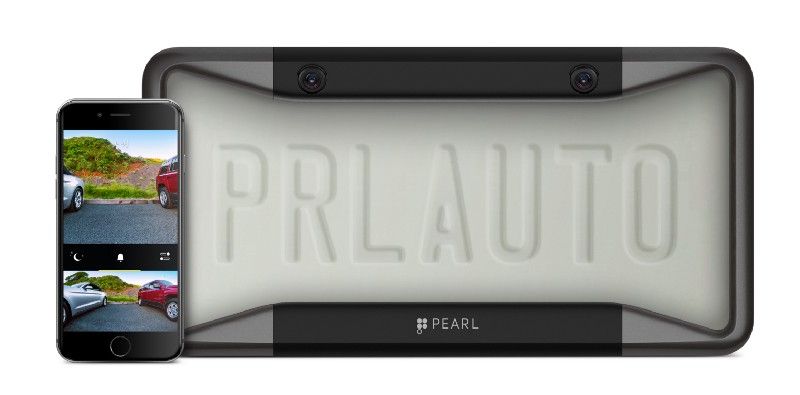
Read this sentence from a Forbes’s article about the huge market that the company is pursuing:
Despite that fact that only 20% to 25% of cars are equipped with rear-view cameras, according to Gardner, an increasing number of car owners are interested in them along with other safety-related features. And even with new federal regulations requiring that all new cars be built with a rear-view camera starting in May 2018, many cars will still be on the road without them. After all, as Gardner points out, drivers don’t buy new cars as often as they upgrade their smartphones.In short: Pearl’s market for its rear-view cameras is big, according to Gardner.
Nest
The Smart Home industry could be generating $121.73 Billion by 2020:
The report “Smart Home Market by Product (Lighting Control (Timer, Daylight Sensor, Occupancy Sensor), Security & Access Control, HVAC, Entertainment, Home Healthcare and Smart Kitchen), Software & Service (Behavioral, Proactive), and Geography — Global Forecast to 2022”.The smart home market is expected to grow from USD 46.97 Billion in 2015 to USD 121.73 Billion by 2022, at a CAGR of 14.07% between 2016 and 2022.
Think for a moment if Pearl + Nest were inside the Apple’s ecosystem. Both organizations could generate billions to the company. Take Pearl as example:
For an estimate of 263.6 Million of cars in the U.S roads, for an average age of 11.4 years for every car, taking just 0.001% of this huge number is, which need a Rear-camera system for 2018 for a price of $499
263,600 cars x $499 = $131,237,000
Of course, this will depend of the production speed of Pearl, you have a clear idea why it could be different if Pearl manufactured their rear-camera systems using Apple’s facilities.
IDEA # 2: Absorb Loup Ventures or become in a LP for the firm
Gene Munster (well known in Wall Street as one of the best Apple’s analysts), along with Doug Clinton (Managing Partner), Andrew Murphy (Managing Partner) and David Kroger (Analyst) created Loup Ventures to invest in the Future Perfect as they called in their Manifesto:
The combination of virtual reality, augmented reality, artificial intelligence, and robotics will fundamentally transform how we live — for the better. It will enable a world of infinite and limitless exploration. A world where humans are free to live their passions without worry for basic needs. A world where humans find purpose in creativity, community, and experience. A world where humans can be more human. Loup Ventures is pursuing this absolutely fantastic future: The Future Perfect.
Why Apple should work with this team?
Because they know very well the company, and they could be in the front-lines of investments in key fields like Augmented Reality, Robotics and Artificial Intelligence; foreseeing what would be the perfect fit for future Apple’s products, platforms and services.
They have written extensive research about these topics, so they are seeing technology 10 years before normal people see it. Some of my favorite articles written by them are:
- Robot Fear Index 31.5
- SNAP is a Camera Company Because Text Is Dead
- Our Expectations for iPhone X
- Innovate Like Apple, with baby steps
- VR Over the Holidays: What to Expect for Oculus and Vive Sales in Q4
IDEA # 3: Bring seasoned VC in Mobile like Kevin Spain & Mina Radhakrishnan as Advisors
Kevin Spain (General Partner at Emergence Capital)& mina (now a co-founder in a Stealth company, I suspect to enter in the Real State Industry) are experts in the Mobile field. If you read this post from Kevin about the Mobile Enterprise Opportunity at TechCrunch, you will understand why I’m saying this, especially this part:
A significant portion of those 2 billion-plus workers without technology are in the developing world, with 50 percent in Asia-Pacific, 10 percent in Latin America and another 10 percent in the Middle East and Africa. This global opportunity is enormous, and mobile technology is uniquely poised to capitalize on this market as the heavy infrastructure improvements necessary for hard-wired solutions are expensive and time consuming to deploy.Overall, we’re talking about some pretty staggering numbers, but just how big is the mobile enterprise opportunity? Consider this quick calculation. If we take the 2.5 billion workers that don’t have desk jobs and assume we can monetize each one at about $40 per year (a mere 10 percent of what is spent today on technology for a typical desk-bound worker) we’re looking at approximately $100+ billion in annual revenue.
To get deeper on this, Kevin and the team at Emergence Capital
In the case of Mina, she was the Head of Product at Uber, an EIR at RedpointVC, and if you read some of her posts about Uber going global, you will see her expertise in this field. BTW, Mina is one of my Product Managers Heroes.
Why Kevin and Mina? They could help to identify “The Next Big Thing” in the Mobile space.

IDEA # 4 Invest in or acquire Slack
Total funding: $539.95M in 9 rounds based in Crunchbase’s data
Last valuation: $3.8 Billion
Key stats from Alex Wilhem in the Mattermark blog:
- 1.25 million paid seats.
- 4 million daily active users (DAUs).
- 5.8 million weekly active users (WAUs).
- Passed the $100 million annual recurring revenue (ARR) mark this summer
Why Slack?
Slack is disrupting the Enterprise world in every sense of the world, and now with the last released product called Enterprise Grid, they could grow even more:
Introducing Slack Enterprise Grid
A new product from Slack to power work across large organizationsslackhq.com
If Apple decides to acquire the company, they could give a very attractive offer to them in cash and stocks if they like; or if they decide to invest in the organization and to wait for an acquisition or a possible IPO from Slack; this could be valuable too. In any case, it could be very beneficial for Apple.
IDEA # 5 Acquire InVision
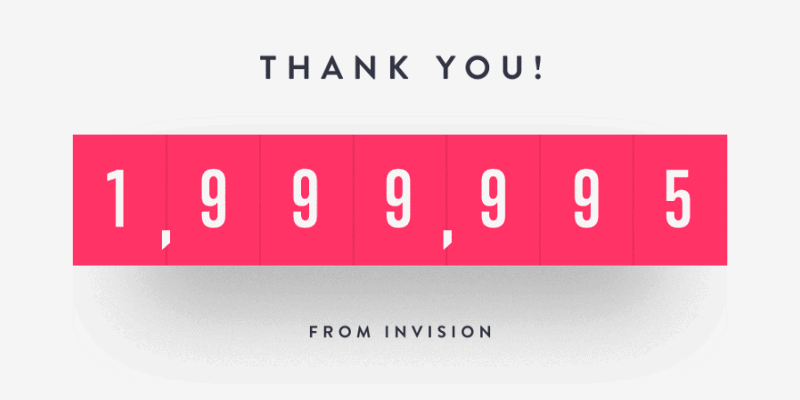
Total funding: $134.1M
Key stat: 2 Million of customers (and growing), including a lot of big companies and teams like Uber Design, Twitter, Salesforce, IBM Design, and many more:
Apple is an InVision’s client too, so they know the benefits of the platform in first-hand. Now, imagine InVision inside Apple’s ecosystem. Could you imagine that every iOS developer could use InVision with their respective iCloud’s account? The growth could be massive:
Inside the App Store, there are 2 Million of available apps, based in the last data published by the company in the past WWDC 2016.
Now, if 1 Million developers buy an InVision’s subscription with a special offer of $19.99 per month (A combined plan between Starter ($15) and Professional ($25) Plans) for them, InVision’s Monthly Recurring Revenue (MRR) will be:
1,000,000 developers x $19.99 = $19,990,000 Monthly, which could be $239,880,000 annually
Apple could make a generous offer to the InVision’s crew in cash and stocks too.

IDEA # 6 Invest in Airbnb
Total funding: $3.95 Billion
Last valuation: $25.5 Billion
Key stat: $900 Million in Revenue in 2016
An investment in Airbnb, could help to Apple to be in the front-lines of the travel industry, especially in the Corporate Travel sector; a market which I’ve written before:
Business Ride-Sharing Market: One of the most interesting sectors to work as a Product Manager
If you a new Product Manager, you want to join to a company to make a huge impact.medium.com
IDEA # 7 Invest in Careem
Total funding: $421.7M in 4 rounds based in Crunchbase´s data
Valuation: $1 Billion
Key stat: Careem operates in 52 cities across the Middle East, North Africa and Pakistan region, and it´s planning an IPO in two or three years
This investment for Apple could be strategic for two reasons:
- Apple could have a strategic allied in Careem in the Middle East region, where e-commerce is a huge market. In a recent answer I wrote at Quora about the best payments gateway in the MENA region, I shared the recent stats about online payments and ecommerce compiled by PayFront:
Based on the seven key country markets studied, the region saw a 23 percent increase in online payments during 2015, led by strong growth in Saudi Arabia and the United Arab Emirates, showing 40 percent and 24 percent year-on-year growth respectivelyMeanwhile, the report forecasts that the volume of online payments could increase nearly three times by the year 2020 to reach more than US$69 billion of transactions per annum
The new report shows strong growth in online shopping across different sectors, with transactions in the airline sector increasing by 18 percent from 2014 to 2015, in the travel sector by 39 percent, in the ecommerce sector by 31 percent and in the entertainment sector by 34 percent
- Apple could act as the “bridge connector” to include Careem in the Anti-Uber Alliance among Didi Chuxing, Lyft, Grab, Ola. With the large community of expats living in the Middle East region, Careem could bring a lot of good things for the global alliance. Apple has invested in Lyft and Didi, and Careem is the leading ride-sharing company in the Middle East, so, this could be seen as a clear next step
To see more about Careem´s milestones in 2016, you can watch this video:
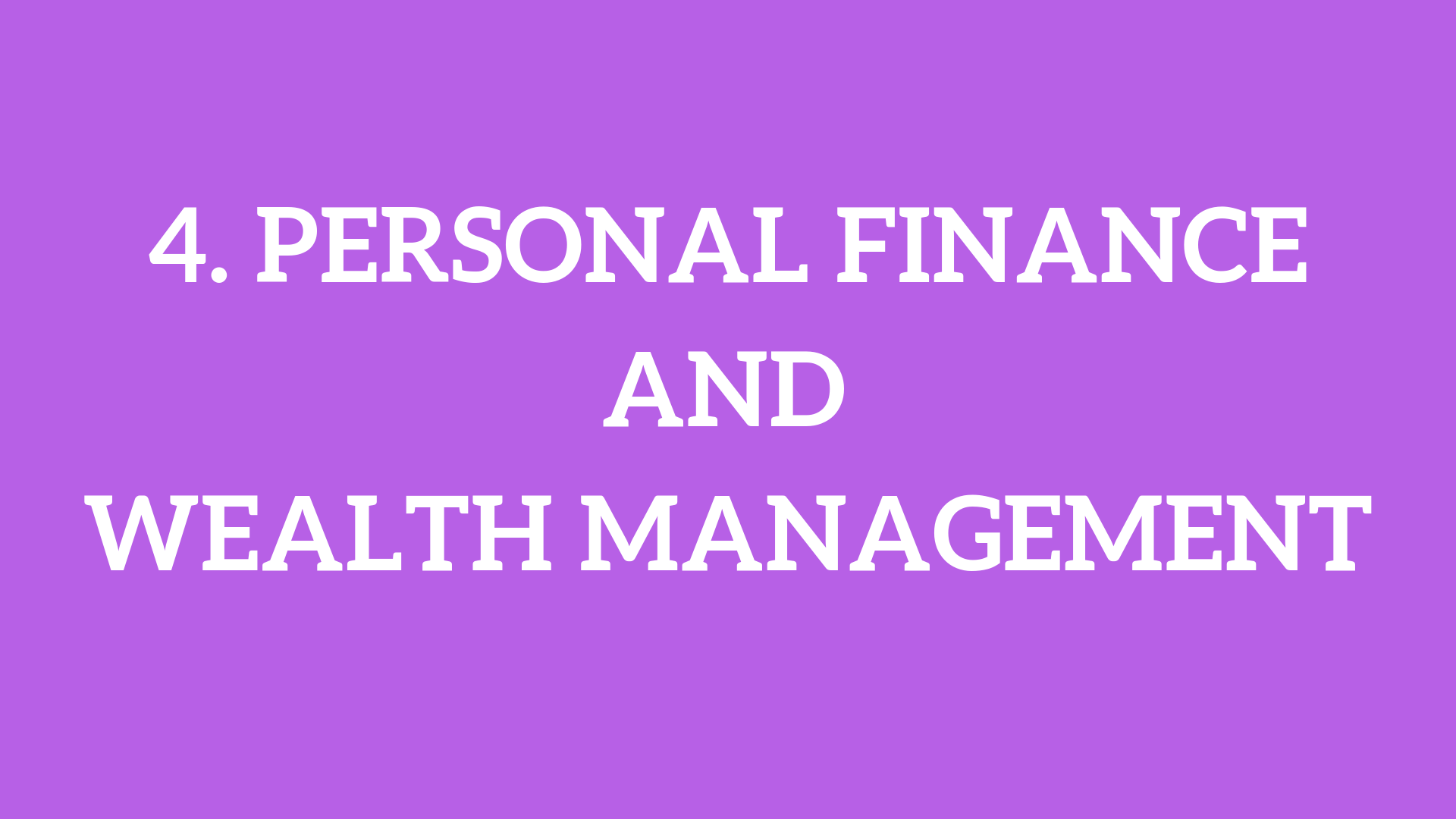
IDEA # 8 Invest in Wealthfront
Total Funding: $129.5M
Key stat: $7 Trillion Market
Wealthfront is one of my favorite organizations in the U.S. I love the product, I love people there, and I love the opportunity behind this massive market.
Now think in the combination of Apple and Wealthfront. Based in the estimated made by Horace Dediu in his post called “Counting Apple’s Customers” where he put this:
In addition to the absolute figures and their growth there is also the question of loyalty (frequently cited by the company), switching from other platforms (also frequently cited) and revenues. The company publishes specific figures on service revenues for consumer attached devices showing a run rate of $41 billion/yr in services for their device base.In combination, a picture emerges which shows that Apple has nearly a billion customers. I can’t say how many with any precision but it’s certainly above 500 million (on the basis of iCloud and iTunes accounts). It’s below one billion because some users have more than one device.
Even though it has not happened yet, the trend is pretty clear. Apple will at some point in time have a billion paying customers.
Now, let’s take just 20% of 500 Million, thinking just in U.S iOS users with an age 18+ and offer them to open a $1000 USD Wealthfront’s account as another service from iCloud:
100,000,000 users x $1000 = $100,000,000,000
This could be an instant Growth Hack for Wealthfront.
IDEA # 9 Invest in TransferWise
Total Funding: $116.37M
Key stat: $1 Billion in transfers per Month, saving $50 Million per month for its customers
I wrote about TransferWise here:
TransferWise: A FinTech Unicorn Perfect for a Data-Driven Product Manager
by Marcos Ortiz, PM for Mobile Apps & Growth at MyCasaParticular.commedium.com

IDEA # 10 Acquire or invest in Neumob

Total funding: $10.9M
Key stats: 120 Point of Presence (PoP) globally, including China
Mobile Growth Hits Critical Mass: Usage Up 11% (Furry Analytics)
Neumob is the first true Mobile CDN of the market, with more than 120 PoP around the globe, and with the increasing trend to use Mobile devices for everything, you will note immediately the value of Neumob.
A quick description of the organization is:
Neumob is the leader in app acceleration for a mobile-first world. The Neumob Accelerator SDK speeds up the load times, reliability and performance of mobile apps anywhere in the world, helping app owners keep their hard-won users and drive maximum revenues.
Mobile Performance is key for a success of an app today, and Neumob could help to every iOS (and Android too) developer to improve their respective apps exponentially.
About the expansion to China, Jeff Kim (Neumob’s CEO) said:
Aside from the marketplace there being set up to favor Chinese-made apps, the most important hindrance is China’s networks themselves. All app traffic must travel a patchwork of congested 2G, 3G, and 4G networks, each subject to a Chinese government firewall that further slows traffic down. Our customers often find that even when they’re able to gain traction with Chinese consumers, their app performance suffers as a result, with slow load times and increased in-app errors being the norm.Neumob accelerates everything in an app — every image, every third-party call, and every embedded ad network SDK — thereby bypassing the country’s endemic network problems and making for a smooth, pleasurable app experience
Implementation is relatively painless. App owners install a two-line SDK into their app or game, and Neumob handles the rest.
IDEA # 11 Acquire SparkMail and make it the default Mail app in iOS and Mac OS
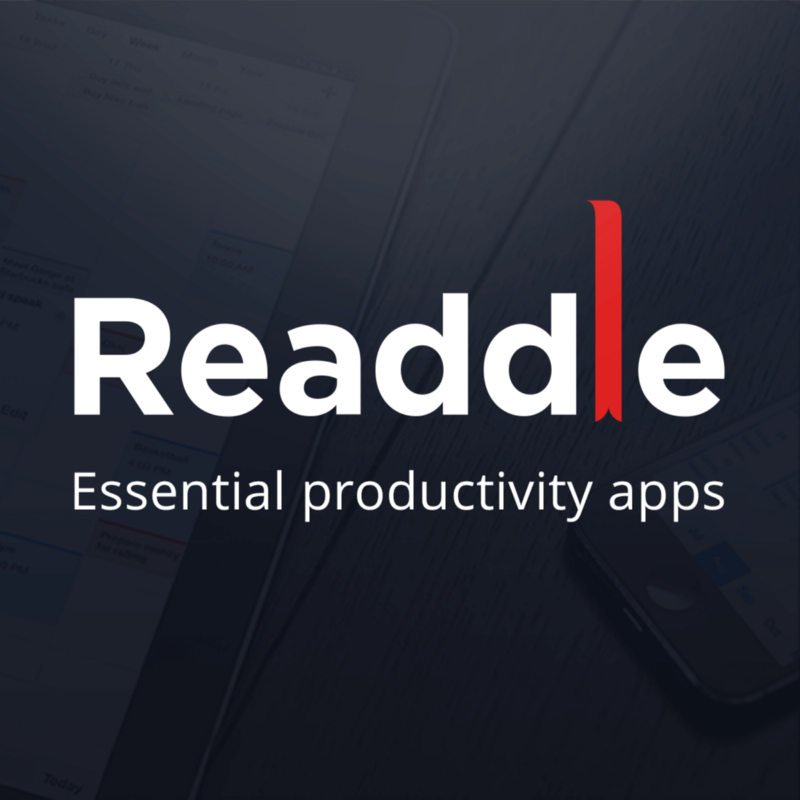
Many people loves this Email app (myself included), so why not to make an acqui-hire for Readdle and make this team in charge of the Productivity apps at Apple? I think they know a thing or two about Productivity.
IDEA # 12 Acquire x.ai

Total Funding: $34.3M in 3 rounds based in Crunchbase’ data
Key stat: From x.ai’s Pricing page sales pitch:
“Say you make $90,000 a year and schedule 8 meetings a week. Each meeting takes about 3.5 emails to negotiate. And you spend 5 minutes writing each scheduling related email.”8 x 3.5 x 5 = 2.33 hrs/week or 10 hrs/month spent scheduling meetings.
$90,000 / 1800 hrs = ~$70/hr Which means you’re investing
$700 every month into scheduling. At that rate, $39/month (or 1,700% ROI) seems like a bargain. We could be biased of course.”
Now, read again the post about the Mobile Enterprise Opportunity from Kevin Spain, and think about this number: 2.5 Billion workers not being supported by technology today. Let’s say, that x.ai inside the Apple’s Services Unit ecosystem could access just 1% of that huge market:
250 Million of workers x $39 =9,750,000,000
Just in the United States, the Total Addressable Market is huge. Read this post in the x.ai’s blog:
In 1988, United States Fortune 500 companies are estimated to have held between “eleven and fifteen million” formal meetings daily and between “three and four billion“ meetings yearly [13, 52].
If we want to extrapolate this number into an amount of formal meetings conducted in the US per year in 2013, we could make a few conservative assumptions; a) the 1988 fortune 500 workforce is loosely one fifth of the total 2013 workforce as per the Bureau of Labor Statistics b) the workers outside of the fortune 500 conduct only half the amount of meetings and c) the growth in formal meetings conducted between 1988 to 2013 (25 years) was 0% a year.
This set of assumptions brings us to ~10 billion formal meetings conducted in the US every year.
Imagine 10,000,000,000 invites and the amount of time spent setting them up — and subsequently time spent participating in them. Hundreds of billions of dollars, in the US alone, in workforce productivity is being invested into the idea of a valuable meeting. I did 1019 meetings myself in 2012.
IDEA # 13 Invest in Campaign Monitor and work with them to create an exclusive “Personal Plan” for iOS Developers ($19.99 USD per month)
Campaign Monitor is one of my preferred Email-focused companies in Tech for its beautiful and well-designed Email templates and its simplicity.
Apple loves Design, and Campaign Monitor has embraced Design since its beginnings, so they could create a long-term partnership to help to app developers to deliver the best news for their respective users using beautifully design emails done with Campaign Monitor.
Why $19.99? This is a magic number for Apple, so they could work with Campaign Monitor to create an exclusive “Developer Plan” with certain features for Developers.
Numbers? Again:
1,000,000 developers x $19.99 = $19,990,000 Monthly, which could be $239,880,000 annually
Conclusions
There are many ways to increase the market capitalization of a company, but for one of the most valuable company of the world is a big challenge to bring $100 Billion in Annual Recurring Revenue to its Services Unit.
I strongly believe that these organizations could help Apple to achieve that and more, and increase steadily Apple’s stock price in a two-figures number per year, that could result in a $2 Trillion company in 2037.
Crazy or not, these ideas could be a reality if Apple wants. If you think I’m crazy, leave a response, share with a friend by madness. If you think I’m not so crazy, leave a response from your own perspective what would you do to increase Apple’s market cap? Send me a Tweet with the #Apple2Trillion hashtag to follow the discussion.
Thanks again for reading.

